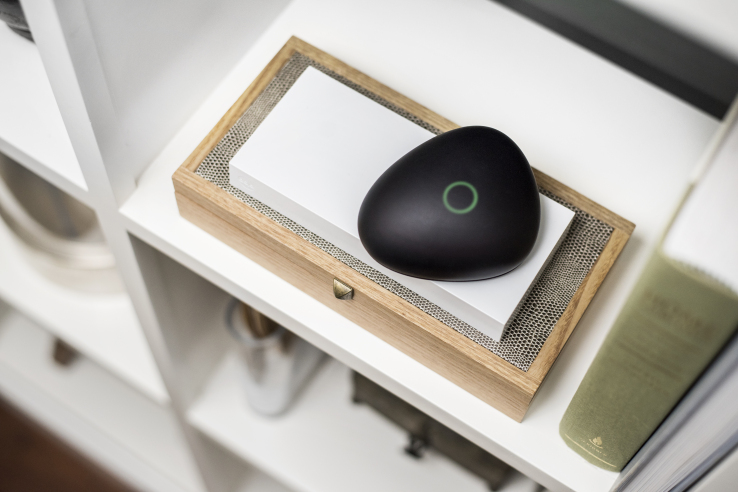Security firm BullGuard has launched a consumer-focused Internet of Things product in the U.S., following its acquisition of Israeli startup Dojo-Labs last year.
The startup had been stealthily working on the network monitoring device designed for smart homes all the way back in 2014, before showing off the physical pebble-shaped device for displaying visual alerts in 2015 — and starting to take pre-orders.
As well as the pebble’s traffic-light style visual alerts, an in-app messaging interface aims to make it easier for consumers to manage smart home security needs across a range of different connected devices.
While the team’s original aim was to start shipping in March 2016 that date came and went with no Dojo. Then in August last year Dojo-Labs was acquired by UK security firm BullGuard. Getting the device to market would be its “immediate focus”, the larger security firm said at the time.
Nine months later the Dojo is finally shipping — albeit, only in the U.S., where the smart home has built up more momentum vs many other markets.
It’s being priced at $199, which includes the first 12-months of service. Thereafter the ongoing service charge is $99 per year or $9.99 per month.
All traffic on a home network has to be routed via the Dojo for it to be able to see what’s going on across all your various connected devices and thus perform its anomaly detection function. So, while the hero shots of the device may look pretty, you’ll need to plug the white box into your wi-fi router with an Ethernet cable. You’ll also need to be comfortable proving a third party company with data stream visibility of your home network.
Once plugged in to the wi-fi, the Dojo generates a view of all the devices connected to the network and continuously monitors activity. It uses machine learning and pattern matching to determine what’s normal and what’s a potential problem — flagging alerts to the user when it spots something suspicious, by displaying red or amber lights on the pebble and/or via in-app alerts.
While the product certainly looks to have been thoughtfully designed, it remains to be seen how well it functions against IoT hacking risks.
And how much demand there will be for what is effectively a new category of security product. The key question here is whether consumers can be sold on the idea that they are the ones who should have to pay a subscription service to secure a smart home — vs robust security being a baked into their IoT devices from the get-go.














